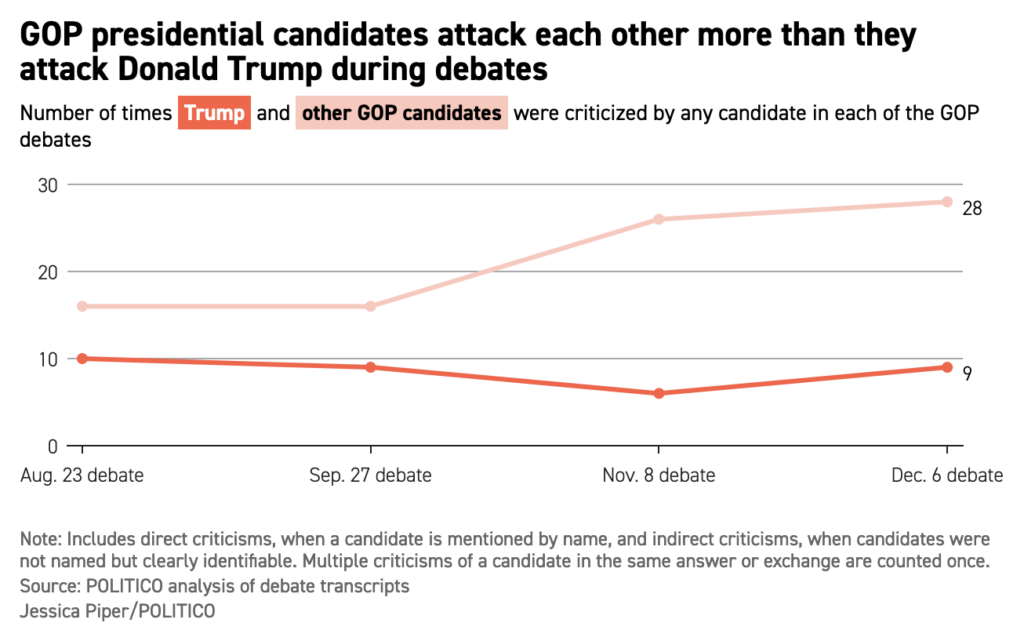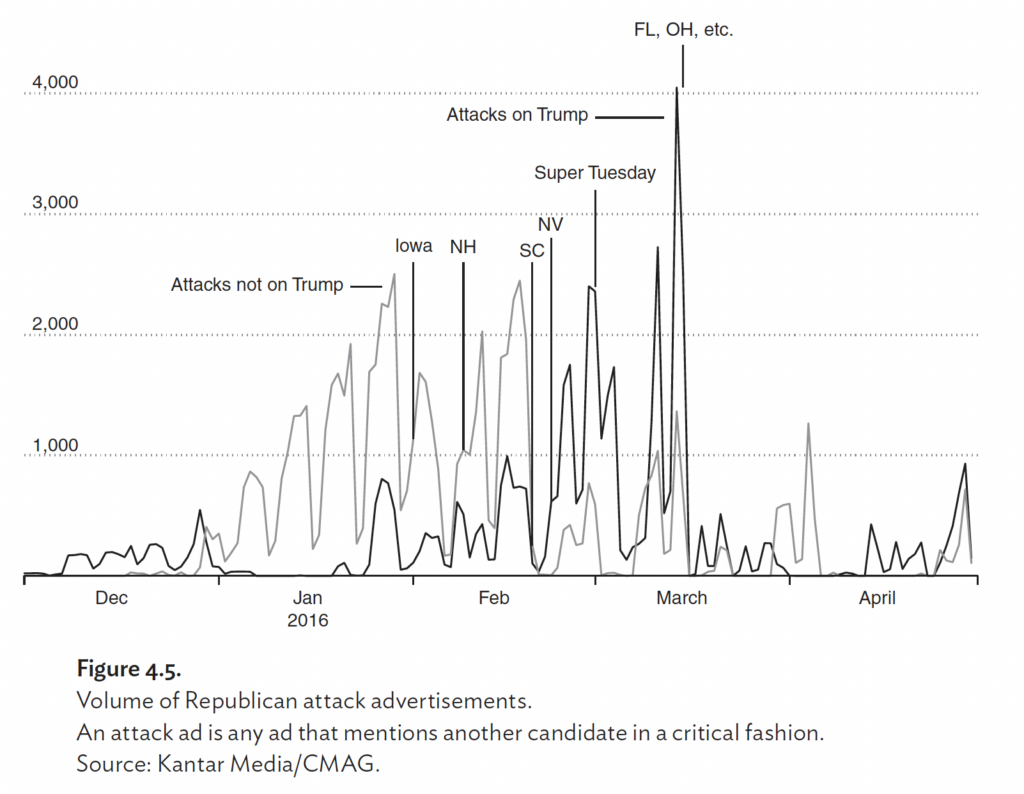
After last week’s Republican presidential primary debate, Politico counted the number of times the candidates on the stage attacked each other as well as the frontrunner, Donald Trump (who, of course, was not present). Here’s what they found:

Across the four debates, Trump has been attacked between eight and 10 times per debate. This hasn’t changed much. But the number of times his opponents have attacked each other has increased from 16 to 28.
This reminded me of what happened in the 2016 Republican primary. There, Trump was also in the lead by the fall of 2015 but his Republican opponents mostly ignored him and turned their fire on each other. One analysis of the pre-primary debates called it “Donald Trump’s long easy debate ride.“ Only Jeb Bush consistently attacked Trump. (Chris Christie is playing the same role this year.)
And as Michael Tesler, Lynn Vavreck, and I showed in our book on the 2016 election, Identity Crisis, the same thing was true in television advertising. Only after Trump won the New Hampshire primary did his opponents starting airing more ads attacking him than ads attacking each other:

A natural response to these graphs is: So what? Would attacking Trump sooner have made any difference in 2016, or make any difference now?
On the one hand, I think people sometimes underestimate the effect of attacking Trump. We showed that in the 2016 primary, Trump’s favorability among Republicans did suffer when he did unpopular things like criticize Sen. John McCain (R-Ariz.). He wasn’t, as some argued, “Teflon Don.“
Even today, it’s easy to exaggerate Trump’s standing among Republican voters, which is routinely called a “grip.” In our book on the 2020 election, we argued instead that a significant number of Republicans have warm but not entirely enthusiastic views of Trump.
You can see that now. In a November 2023 YouGov/Economist poll, about half (53%) of Republicans said their view of Trump was “strongly favorable.” A substantial chunk (32%) chose the more modest “somewhat favorable” and most of the rest (14%) were unfavorable. Even if those numbers are better than the numbers for Nikki Haley or Ron DeSantis, a lot of Republicans appear to like Trump rather than love him.
On the other hand, the risks of attacking Trump are clear. You can see the price that Sen. Mitch McConnell (R-Ky.) paid for his criticism of Trump after the January 6 attack on the U.S. Capitol. And of course, a majority of Republicans have an unfavorable view of Christie.
What’s needed instead is a coordinated attack on Trump, so that it’s not just one sacrificial lamb sticking out their neck. But that kind of coordination eluded Republicans in 2016, and it’s happening again this time. Instead, the candidates appear to be fighting for second place.
But if 2016 is any indicator, letting Trump cruise unscathed for too long is also a guarantee of second place.



